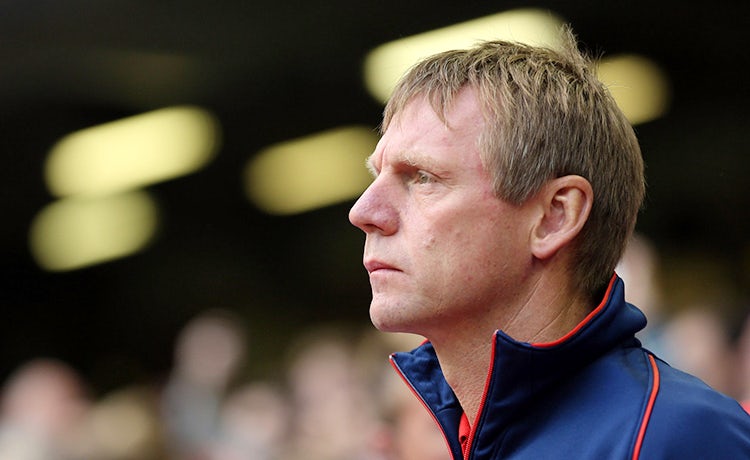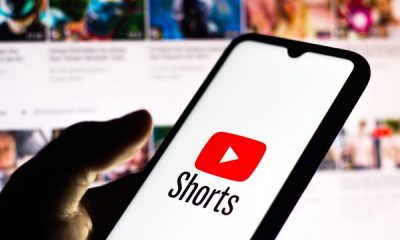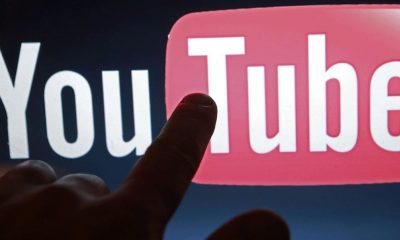INTERNET MARKETING NEWS
Why Green Flag is embracing its challenger brand status
[ad_1]
A proud challenger brand two-and-a-half decades on from its launch, breakdown assistance provider Green Flag is hoping to take consumers back in time with the roll-out of its 25th anniversary campaign.
Born out of a conversation between two men in a Leeds chippy back in 1971, the National Breakdown Recovery Club was rebranded to Green Flag in 1994 on the core principle of working with local garages to offer cost-efficient breakdown assistance.
That same year, Green Flag became the first brand to sponsor the England football team, taking a four-season deal that included the UEFA Euro 1996 and 1998 FIFA World Cup tournaments, at a rumoured cost of £4m.
Now the breakdown assistance company is using its anniversary to shine a spotlight on its heritage through a tie-up with brand ambassador Stuart Pearce, the England captain back in 1994.
“25 years of the Green Flag brand is quite a milestone. Some people think we are a really young brand that isn’t necessarily as well equipped or credible as the likes of The AA and RAC,” points out Candace Gerlach, head of marketing communications.
“For us this message is about championing our brand difference and celebrating our customers, as well as reinforcing how the business has always been a smart business and, in today’s sharing economy, is still run in a smart way compared to other breakdown providers.”
Rather than being focused on driving sales, the campaign is all about brand awareness, talking up Green Flag’s heritage and bringing its localised business model to the core of this story. Running on social and digital, the 25th anniversary campaign has been designed to complement Green Flag’s wider summer campaign, which went live at the start of July.
While Green Flag, which is owned by Direct Line Group, is seen as a reputable breakdown company, the brand still has “a long way to go” to explain how and why it operates differently and the benefits that brings.
The fact that the company does not have a fleet of branded vans, like rivals The AA and RAC, but instead partners with up to 200 local garages nationwide is both a key point of difference and a communications challenge.
A challenge, for examples, is that people often ask why they see vans from rival brands out on the road but not Green Flag. However, an advantage of working with local garages is that Green Flag can offer a more personalised service, a benefit that to-date the marketing has not focused on.
Sometimes internally we’ve felt a bit apologetic because The AA and RAC are such phenomenal brands and businesses.
Candace Gerlach, Green Flag
The team is also keen to show how the business has adapted to changing driver lifestyles over the past 25 years. Whereas in 1994 very few people had a mobile phone, now an increasing number of drivers choose to register their breakdown via the Green Flag app. This means talking up the functionality of the app in its marketing.
Furthermore, the brand is adapting to the shifting media landscape. Whereas previously much of Green Flag’s marketing was “quite tactical” and centred on newspaper advertising, spend has naturally shifted online. That being said, TV and radio also perform better for Green Flag than print, both from a brand and profitability perspective.
“Over time we’ve gone from communicating quite tactically to thinking about mass reach and how we can tell our brand story above-the-line, reach a larger percentage of our audience and tell a more compelling story,” Gerlach explains.
Retaining a challenger spirit
Despite being a quarter of a century old, Green Flag still proudly describes itself as a challenger brand. Ever since Dean Keeling joined as managing director in 2017 he has galvanised the business with a “can-do attitude”, which coincided with an internal brand reboot.
“He has spent a lot of time building belief across the organisation that we have all of the tools that we need to really succeed as a business. Sometimes internally we’ve felt a bit apologetic because The AA and RAC are such phenomenal brands and businesses,” she states.
“Sometimes when you’re faced with companies like that it feels like an unachievable ambition to do as well as they do. But actually if you think about where the brand came from, how it’s evolved over time and the agility we can adopt because we work with independent garages, it’s phenomenal.”
Gerlach wants this challenger mentality to flow through all Green Flag’s communications, from the call centre operations to the way the technicians talk to customers at the roadside and the tone of the TV advertising.
For instance, instead of showing people stranded at the roadside being rescued by branded vans, Green Flag’s ‘Common Sense to the Rescue’ summer campaign takes a comic swipe at its rivals, while playing up to its challenger reputation.
Green Flag still firmly sees itself as a mass market brand, despite its challenger status. While the core customer demographic are drivers aged 50-plus, the brand also appeals to younger drivers. The issue is keeping these 25- to 35-year-old drivers engaged.
That is because, as car reliability improves, many don’t see the benefit of breakdown coverage. Gerlach cites figures that while 25 years ago, just 53% of young drivers had breakdown cover but would nearly all would break down at some point in the first five years of driving, now 85% have cover but less than two-thirds will need it.
“We’re capturing more younger drivers, but they’re breaking down less frequently and because of that they don’t see the value in having breakdown policies. They’re attracted by our offering, but they’ve got more important things to spend their money on, so they tend to cancel their policy after year one if they haven’t used it. That’s a challenge for us,” she explains.
Aside from justifying the value of breakdown recovery, Green Flag is also contending with a changing cultural climate where people are encouraged to drive less or switch to electric cars.
To better understand this shift, Green Flag is embarking on a piece of research to get under the skin of what the future of travel will look like. While still in the early stages, the team wants to talk to as many consumers as possible over the next couple of months to learn more about their expectations and priorities around transport and the role breakdown has to play.
The evolving role of sponsorship
Moving forward as a brand also means understanding the evolving role of sponsorship and what that means for Green Flag in 2019.
While the company is looking back to its sponsorship of the England football team in 1994, the breakdown service crossed over to rugby in 2014, signing a two-season sponsorship deal with Aviva Premiership Rugby.
As part of this, Green Flag gave rugby fans free motor ‘health-checks’ in club car parks and worked with local media partners to offer exclusive ticket competitions and giveaways. Gerlach describes this as an interesting test for the brand as it was one its first big sponsorships since the England Football tie-up.
Aviva launches subscription product to rebuild trust in ‘unfair’ insurance market
However, when analysing the success of the whole marketing mix, the Premiership Rugby sponsorship was found to not be giving Green Flag the cut-through it needed.
“We have a job to do to tell our story in terms of how we deliver a service to our customers at the roadside, up against two big brands with huge amounts of heritage. We have a job to really land those core messages and with a sponsorship like that it doesn’t quite allow us to do that,” Gerlach states.
“TV and radio advertising are a much more effective way for us to reach that broad audience with the key messages we need to.”
Now, Green Flag approaches things slightly differently and has recently embarked on a radio sponsorship spanning 10- to 15-second idents. These provide greater frequency than spot radio buys and allow Gerlach’s team to rotate different messages about the app, customer reviews and the speed of the roadside service.
PR is also becoming increasingly important due to the fact trust is declining in traditional advertising, Gerlach explains, which is why she is keen for Green Flag to define its social purpose.
“We need to think, what do people actually care about? They care about society. The more of a shambles politicians are making of decision-making and running the government, the more they’re looking to businesses like ours,” Gerlach states.
Key to this approach will be shining a light on the company’s relationships with local businesses, where she sees a significant opportunity from a brand perception and credibility perspective to give Green Flag a more human face.
[ad_2]
Source link













